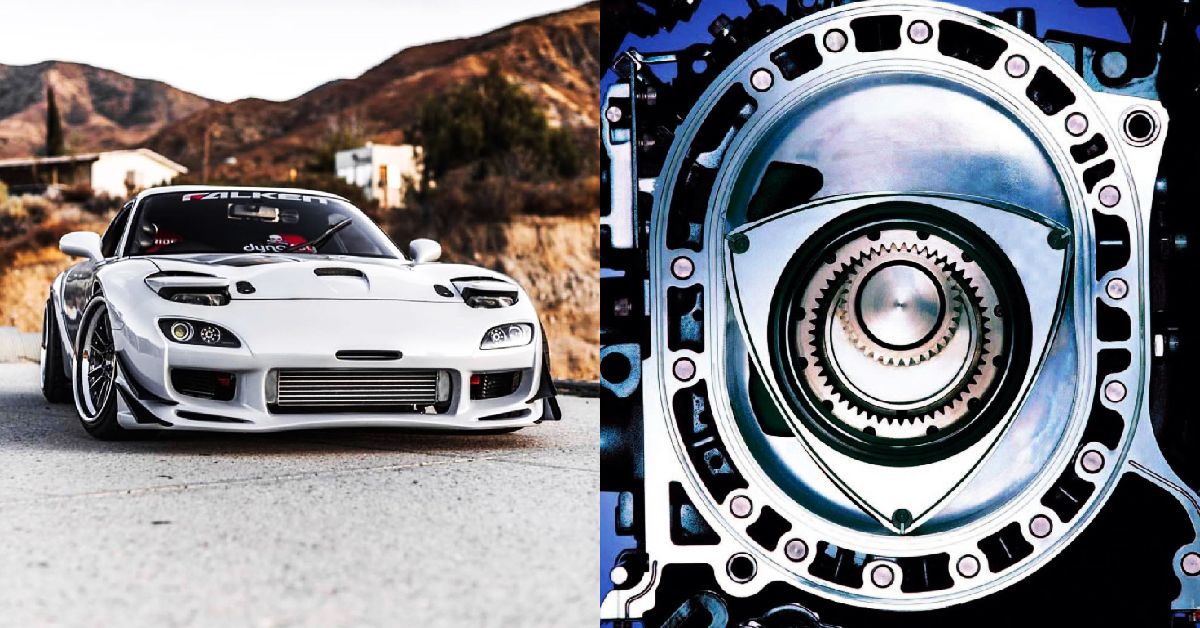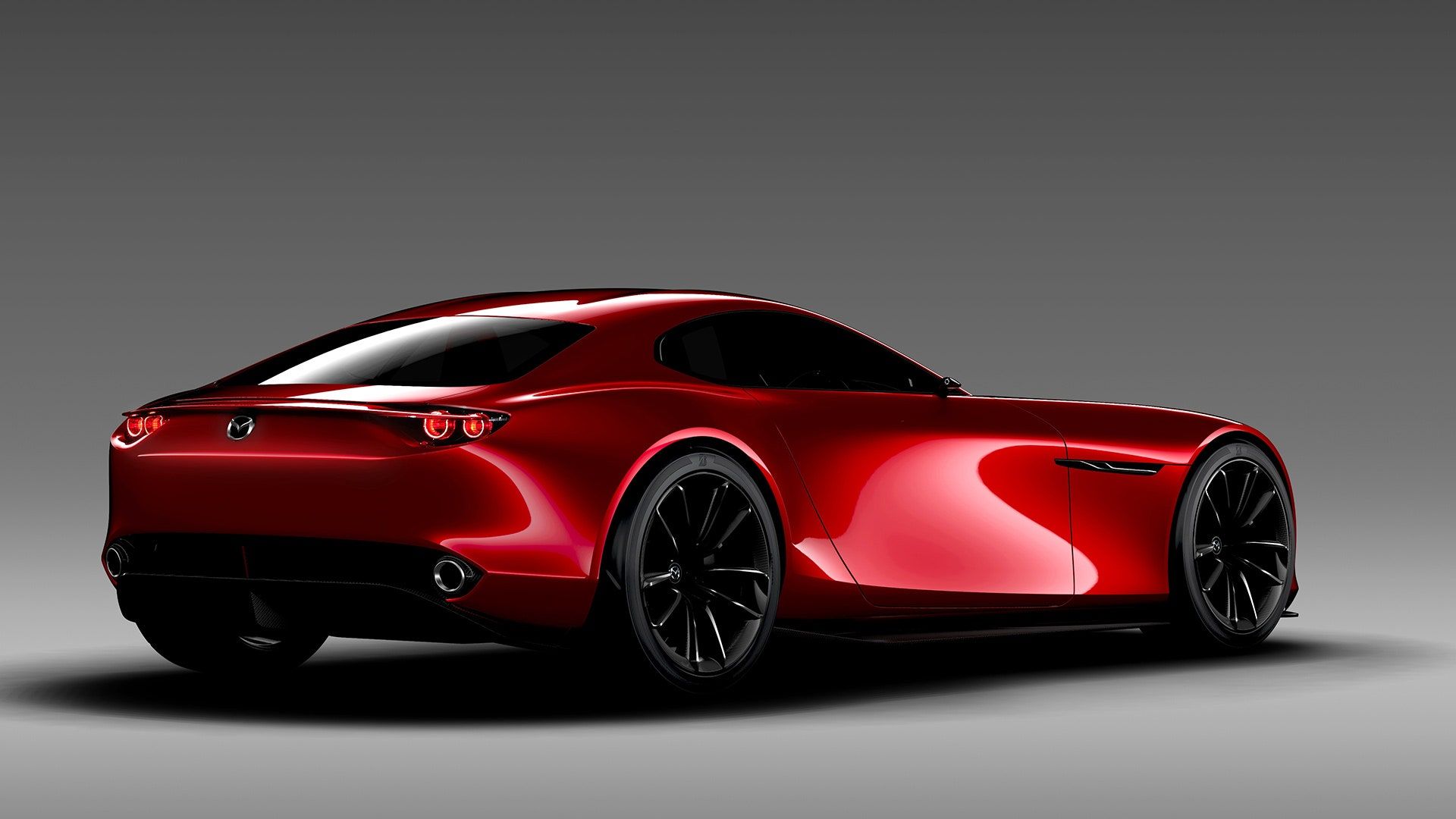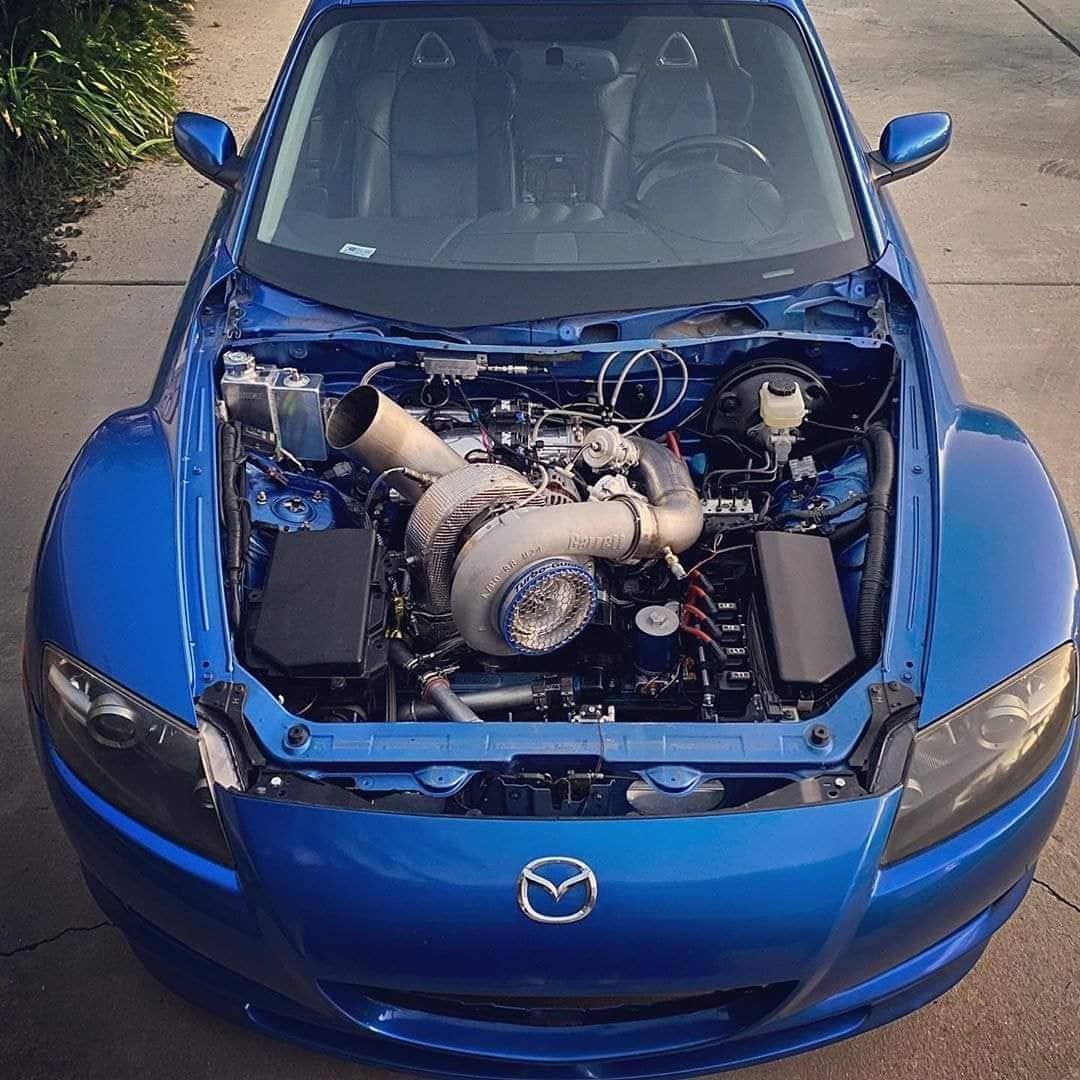The rotary engine began long before Felix Wankel invented a version that could be used in a car or truck. In fact, the father of the rotary engine is Felix Millet who first introduced the engine in a bicycle back in 1889 in Paris. From there on, many people have made versions of it, with most of the technology being used in aircraft and boats across the globe.
The thing with rotary engines is that they offer more consistent torque, they have less vibration, and they are much smaller than the traditional reciprocating piston engine. To understand how big of a deal these motors are, it is important to understand how they work. So, let's dig into how they work, and why they are such a great motor. A great engine that has been underrated and pushed into oblivion, even though the sports cars that they were placed into can easily run with some big dogs.
10 The Good: What Makes It Unique
The rotor-type engine is based on the same principle as the basic engines that we are all used to working on. The main difference is that it has no cylinders. The rotor that is in the middle of the engine does not produce combustion by linear motion like in the piston-driven motors. It rotates in a circular motion to start the combustion process.
Most of the time the engines that were used only had the one rotor per engine. Some of the more powerful motors in planes and on bikes had two rotors per engine. Mazda took it a few more steps with four rotors and four sections, making it able to replace the inline four cylinders that would normally go under the hood. The four rotors rotate in unison to create the torque and power that drives the car, or truck.
9 The Good: The Housing Is The Key
The housing is the main component of the rotor-type motor. It is the large oval-shaped opening that holds the rotor, allowing it to rotate in a circular motion. The rotor spins with the edges, always touching the housing in all three points. The compression builds up and is ignited by the spark plugs that are screwed directly into the housing wall.
The rotary motor then does the same process as the piston-style engines. The gas pockets that are formed go through the four stages of a motor. In case a refresher is needed the four parts of a cycle are intake to compression and then combustion to exhaust. The cycle repeats itself at varying speeds, depending on the demand put upon it from the driver.
8 The Good: The Output Shaft Controls The Torque
The compression and combustion stages convert energy into rotational power. That rotational power is converted into torque through the output shaft. This makes it the piece of the motor that transfers the power from the motor to the transmission, then it pushes it along to the drive tires of the car.
The shaft has lobes attached to it which comes into contact with the rotor as it rotates inside the housing. This makes it rotate, which turns the gears that the output shaft goes into. That is when the transmission is in gear. The basic workings of the car are the same on all types of cars, except for how the motor works.
7 The Good: Small Size Makes For Big Power
The rotary engine has fewer moving parts and is a much simpler design than the average piston-style motor. This allows the motor to be much smaller, and due to how the rotary parts work these engines have a much higher power to weight ratio. This not only makes the rotary engine a powerhouse, but the size makes it easier for it to be placed under the hood of small sports cars.
6 The Good: Power For All Applications
When it comes to the world of cars most gearheads look for high power and torque numbers. This makes sense because it would be thought that the bigger the better. That is not always the case, though. The small Wankel engine could put out up to 280hp and 231ftlbs of torque. There are even some placed in boats built for racing that can put out up to 3600hp. Impressive for such a small thing.
5 The Good: Smoother Running Than Piston Motors
Unlike the average piston type motor, the rotary engine all moves in the same circular direction. The rotor and the output shaft are in unison, and the counterweights on the outside of the housing make the engine have little to no vibrations transferred outside of the motor. This makes a smooth-running engine that offers a quiet, refined ride when on the pavement or blacktop.
4 The Good: Easy To Work On
A rotary engine may seem complicated to people that have never worked on them, but once the basic concept of them is understood it becomes a walk in the park. There are much fewer moving parts in the rotary engine so it will be much harder to mess up when piecing it back together after a complete rebuild. That is, of course, if a rebuild is ever needed because the engine run slower with less force than a piston driven motor, so they are not as prone to wearing out as often.
3 The Bad: Low Fuel Efficiency
Rotary engines do not burn fuel as efficiently as piston-driven engines. The internal workings of the rotary engine exhibit poor thermal combustion habits during the circular movements by allowing pockets of unburned fuel to escape the housing. This unused fuel is eliminated from the system through the exhaust. This makes the rotary engines on the bottom of the list when it comes to fuel efficiency.
2 The Bad: High Oil Consumption
Another design flaw that the rotary engine has is internal lubrication. The rotors and seals need constant oil to maintain the working parts that produce the power. This means that the engine consumes more oil than other types of motors The reason this is the case is that there is not an effective way for the engine to seal each of the housing areas apart from each other, other than seals. This causes them to be over-lubricated all the time, leading to excess amounts of oil being used and burned off.
1 The Bad: High Emissions Means Not Compliant
The biggest reason that the rotary engine is no longer used in cars and trucks is that they are not compliant with the regulations that have been put into place. As explained above, the motor is designed to burn oil and fuel at a higher rate than that for which the rules allow. There are considerations on the table that state adding direct fuel injection will decrease the number of emissions that the motors set off, but that has yet to happen.
Final Thoughts
The rotary engine is an amazing piece of machinery that can perform extremely well in all types of applications. They are most commonly used in airplanes and boats because they are so lightweight and easy to work on. Until a way is found to reduce the emissions, increase the fuel mileage, and decrease the amount of oil needed to keep them running, they will continue to be ignored for streetcar and truck applications. The one good thing that can be seen by this design is the fact that it makes a fantastic addition on a hybrid car. The rotary engine has size to its advantage when placing it under the hood with an electric motor.
The vehicles that have these motors in them are becoming harder to find, and when they are found they are not in the best of shape. If one is parked in the yard, it is time to restore it to original, and if not, keep a lookout for one to grab up before someone else reading this gets to it first.


.jpg)
.jpg)

.jpg)
.jpeg)
.jpg)
.jpg)
.jpg)

.jpg)